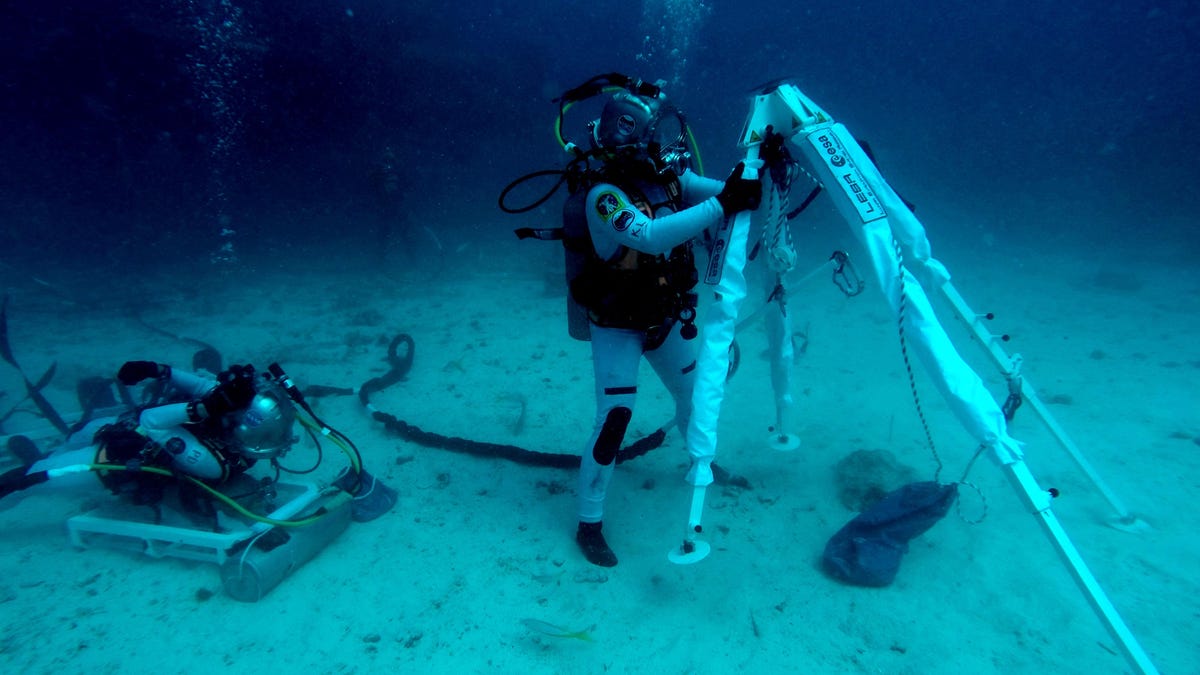Here's how we might save fallen astronauts on the moon
Moon rescues can be tricky. The European Space Agency uses underwater aquanauts to test out a device designed to help injured moonwalkers.
If humans ever make it back to the moon, we'll need to be prepared for all sort of eventualities, including what would happen if an astronaut becomes incapacitated while exploring the lunar surface. The European Space Agency is working on a rescue system, called the Lunar Evacuation System Assembly (LESA), that could help a downed moonwalker get back to safety.
According to the ESA, here's how it works: "A foldable pyramid-like structure on wheels opens above the astronaut, it lifts the incapacitated figure using pulleys and places it on a wheeled stretcher."
Though the moon has less gravity than Earth, bulky spacesuits would severely hamper efforts by one astronaut to pick up another astronaut. That's where a contraption like LESA comes in. The ESA says the structure "allows for quick recovery of a moonwalker while keeping the limited mobility of a spacesuit in mind."
LESA got a very wet dry run during a simulated space mission last week at Aquarius, an underwater research facility off the coast of Florida. NASA uses Aquarius as a training base for its NASA Extreme Environment Mission Operations (NEEMO) project. The aquanauts adjust their buoyancy to simulate the environment on the moon.
The ESA released a series of images showing a simulated rescue in progress on the ocean floor. Once an astronaut is placed on the stretcher, it's a lot easier to move the person.
The aquanauts' feedback from the trials will go into modifying and improving the design. Right now, the system looks a bit bulky, but it does work as advertised. Let's hope it will never need to be used in real life on the moon.
Batteries Not Included: The CNET team reminds us why tech is cool.
CNET Magazine: Check out a sample of the stories in CNET's newsstand edition.


